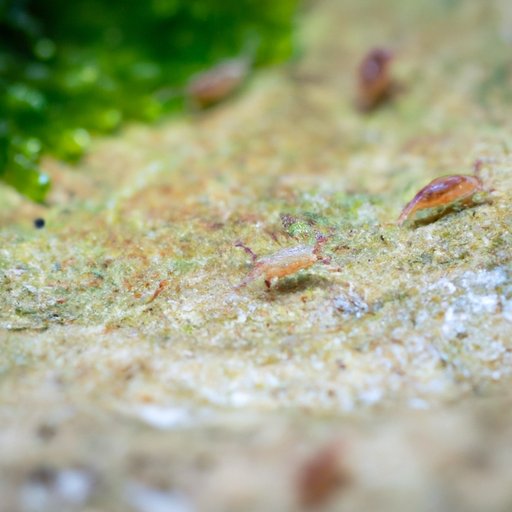Introduction
Springtails are tiny insects that love moisture and feed on decaying matter. They are not harmful to humans or pets, but their presence can be unpleasant and cause damage to plants. They thrive in damp environments and can infest bathrooms, kitchens, and basements. In this article, we will explore various methods for getting rid of springtails and preventing future infestations.
Do-It-Yourself Methods for Getting Rid of Springtails
Removing Excess Moisture
Springtails need moisture to survive, so identifying and eliminating areas of excess moisture in your home is crucial. Check for leaks, drips, and other sources of water that may be attracting springtails. Fix any issues promptly, and consider using dehumidifiers to reduce humidity levels in your home.
Vacuuming Regularly
Good hygiene practices can help keep springtails at bay. Vacuuming regularly can remove any debris or food particles that may be attracting them. Be sure to vacuum carpeted and hard-floor surfaces, along baseboards, and in areas prone to moisture buildup.
Using Essential Oils or Vinegar
Some essential oils and vinegar have been found to repel or kill springtails. Peppermint oil, tea tree oil, and vinegar are among the most effective options. To use, mix a few drops of the oil or vinegar with water in a spray bottle and apply to areas where springtails are present.
Applying Diatomaceous Earth
Diatomaceous earth is a natural mineral that is effective at killing springtails. It is a fine, powdery substance that can be applied directly to affected areas. Be sure to wear gloves and a mask when handling diatomaceous earth, as it can be irritating to the skin and lungs.
Professional Pest Control Services and Insecticides
When to Consider Professional Assistance
If your infestation is severe or persists despite your best efforts, it may be time to call in the professionals. Pest control companies can provide targeted treatments that are more effective than DIY methods. However, professional services can be expensive, so it is best to exhaust all other options before going this route.
Types of Insecticides to Use
If you choose to use insecticides to control springtails, be sure to read and follow all instructions carefully. Some commonly used products include pyrethrins, cypermethrin, and imidacloprid. These insecticides can be applied as sprays or granules, and are available at most hardware stores or online.
Tips for Preventing Future Springtail Infestations
The best way to avoid springtails is to address the conditions that attract them in the first place. Here are some tips for preventing future infestations:
- Fix leaky pipes and faucets promptly
- Control humidity levels in your home with dehumidifiers or ventilation
- Avoid overwatering indoor plants
- Regularly clean and maintain areas prone to moisture buildup
Natural Predators of Springtails and Using Them to Your Advantage
Introduction to Predators
Springtails have natural predators in the form of other insects such as ants, spiders, and beetles. Attracting these predators to your home can help control the springtail population.
How to Attract Them
To attract natural predators, create a hospitable environment by providing hiding places and food sources. For example, by keeping other insects at bay, you can create a food source for spiders and beetles. You can also make your home more welcoming to ants by leaving out small amounts of sweet or fatty foods.
Using Them to Control Springtail Population
Natural predators can be a valuable tool in controlling springtail populations. However, it is important to strike a balance between attracting predators and introducing other unwanted insects to your home.
Conclusion and Additional Resources
Getting rid of springtails can be a time-consuming process, but several DIY methods can be effective. If all else fails, professional pest control services may be necessary. Additionally, taking steps to prevent future infestations can help keep your home springtail-free. For more information on getting rid of springtails, consult with your local pest control professional or research local extensions or university websites for further resources.
